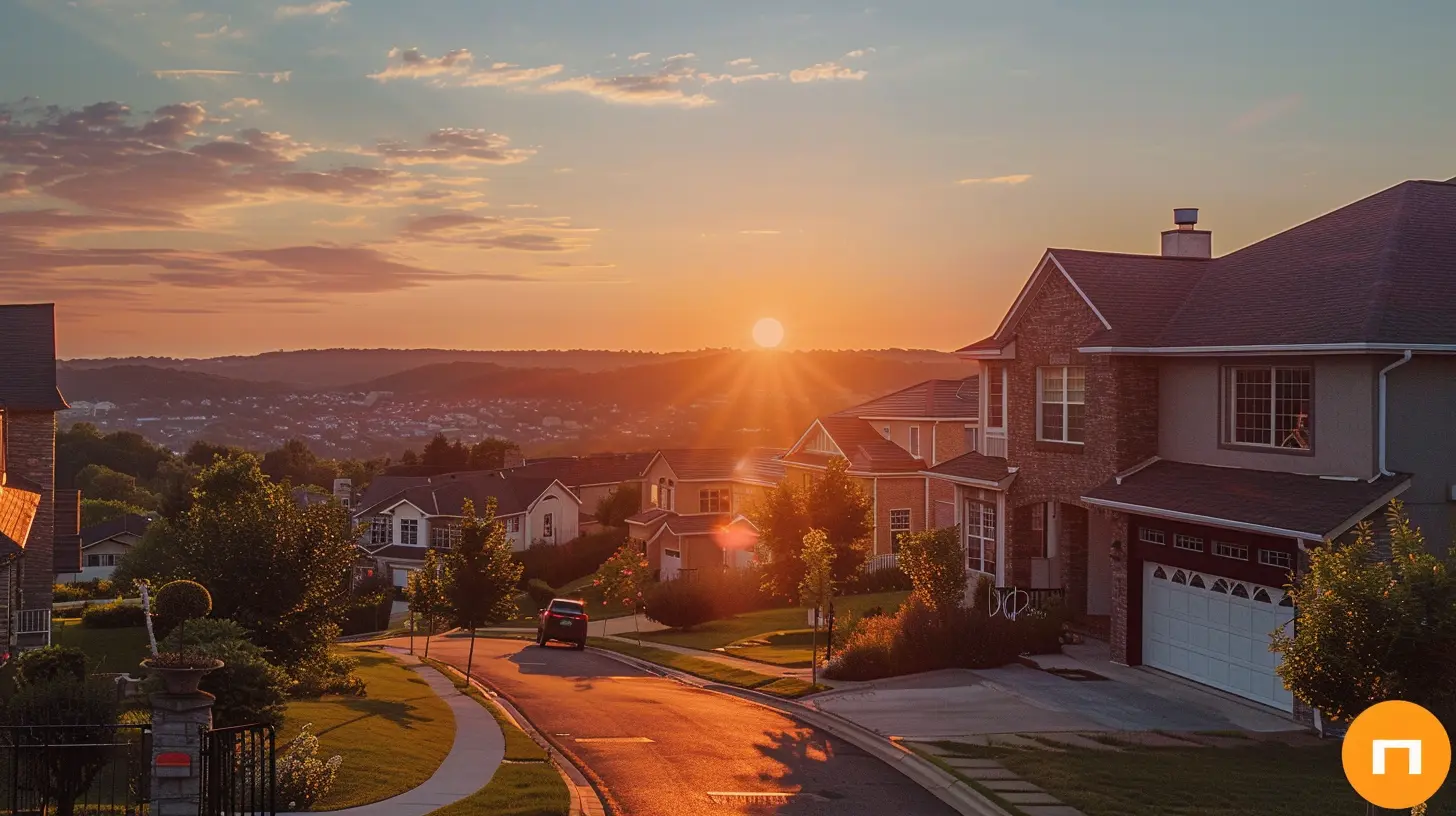The Influence of Remote Work on Suburban Real Estate Markets
7 July 2025
The way we work has changed dramatically in recent years. Once upon a time, the daily commute to the office was a non-negotiable part of life. But now? Remote work has flipped the script, allowing professionals to ditch the morning traffic and set up shop wherever they please.
This shift isn’t just revolutionizing the workplace—it’s shaking up the real estate market, particularly in the suburbs. People are reevaluating where they live, prioritizing space, comfort, and affordability over proximity to the office. Let’s dive into how remote work is reshaping suburban real estate markets and what this means for buyers, sellers, and investors.

The Great Migration: Why People Are Moving to the Suburbs
When working from home became the norm, many professionals began questioning if they really needed to stay in expensive, crowded urban centers. The answer? Not anymore. Cities that once thrived on the hustle and bustle of office life started seeing an exodus of remote workers heading for the suburbs.1. More Space, Less Cost
One of the biggest reasons driving people to the suburbs is space. In city apartments, a home office might mean squeezing a desk into the corner of the bedroom or repurposing a closet. In the suburbs? A dedicated office, a backyard, maybe even a separate guest room—all at a fraction of the cost of a downtown loft.With housing prices in metropolitan areas skyrocketing, many remote workers realized they could get more bang for their buck in suburban neighborhoods. Why pay top dollar for a tiny apartment when you can own a spacious home with a yard for the same price—or even less?
2. A Better Work-Life Balance
The appeal of suburban life goes beyond real estate prices. Remote workers are enjoying a better work-life balance, something that city living often makes difficult. Less noise, cleaner air, and access to parks and open spaces contribute to a healthier lifestyle.Imagine logging off your last Zoom call of the day and stepping into your backyard to relax, rather than squeezing into an overcrowded subway. Sounds like a dream, doesn’t it?
3. The End of the Daily Commute
Let’s be honest—commuting can be brutal. Hours wasted in traffic or crammed into public transit can drain anyone’s energy. Remote work has eliminated this stress for many, making the idea of living far from the city more attractive.Without the pressure to be near an office, workers are choosing homes based on lifestyle rather than convenience. Suddenly, living 30 or even 60 minutes outside the city doesn't seem like a big deal if you're only commuting a few times a month.

How Suburban Real Estate Markets Are Responding
As demand shifts, so do housing trends. Suburban real estate markets are experiencing significant changes, from rising home values to increased competition among buyers. Here’s how the market is reacting to this suburban migration:1. Rising Home Prices
With more buyers looking to escape city life, suburban home prices have surged. Low inventory combined with high demand has created a competitive market. In some areas, bidding wars—once common only in major metropolitan markets—are becoming the new normal.Sellers who once struggled to offload their suburban properties are now finding eager buyers willing to pay top dollar. For homeowners thinking about selling, this shift presents a golden opportunity.
2. The Suburban Construction Boom
To meet demand, developers are ramping up suburban construction projects. New communities are popping up, offering modern homes with home-office spaces, high-speed internet connections, and family-friendly amenities.Builders aren’t just creating houses—they're designing complete live-work-play environments, with coworking spaces, coffee shops, and walking trails all within reach.
3. Increased Demand for Home Offices
The must-have feature in today’s housing market? A home office.Buyers are looking for properties with dedicated workspaces, and real estate agents are emphasizing these features in listings. Some homes even have multiple office spaces to accommodate couples or families with multiple remote workers.
If you’re thinking about selling your home, upgrading a spare room into a functional office space could significantly boost its appeal.

Challenges and Considerations for Homebuyers
While suburban living has its perks, it’s not all sunshine and white picket fences. Here are a few things homebuyers should keep in mind when considering the move:1. Affordability vs. Competition
Yes, suburban homes are often more affordable than city properties, but soaring demand means prices are climbing. Buyers need to act quickly and be prepared for bidding wars, especially in high-demand areas.2. Infrastructure & Internet Access
Not all suburbs are created equal when it comes to infrastructure. Before making a move, remote workers should ensure that their new home has reliable high-speed internet—after all, Zoom calls don’t work well with a spotty connection.Additionally, amenities like grocery stores, healthcare facilities, and entertainment options should be taken into account. Moving too far from urban conveniences could lead to frustration down the line.
3. Social & Professional Connections
While suburban life offers peace and quiet, some remote workers find it isolating. Without the daily interactions of an office or the social scene of a city, staying connected with coworkers and friends requires more effort.Finding local coworking spaces, joining community events, or simply setting up regular virtual hangouts can help maintain those crucial professional and social connections.

The Future of Suburban Real Estate
So, what’s next? Will this shift to suburban living continue, or will workers eventually migrate back to the cities?While some companies are calling employees back to the office, remote and hybrid work options are likely here to stay. This means suburban real estate markets will remain strong for the foreseeable future.
1. Growth in Hybrid Work Locations
Many companies are adopting hybrid work models, allowing employees to work remotely part of the time while coming into the office a few days a week. This setup could push real estate trends towards exurbs—areas even farther from city centers but still accessible for occasional in-office days.2. Smart Homes & Tech-Enabled Living
With remote work becoming the norm, modern homes are evolving to meet the needs of digital professionals. Expect to see more smart home features, soundproofed offices, and high-tech workspaces integrated into new housing developments.3. Long-Term Investment Opportunities
For investors, the suburban boom presents a major opportunity. Rental properties in desirable suburban areas are seeing increased demand, making them a solid long-term investment. As more people trade urban apartments for suburban homes, landlords can expect stable occupancy rates and strong rental yields.Final Thoughts
Remote work has disrupted the traditional housing market, giving suburban areas a much-needed boost. More space, lower costs, and a better quality of life make the suburbs an appealing choice for remote workers looking to put down roots.Whether you're a homebuyer, seller, or investor, the shift towards suburban living offers plenty of opportunities. The key is staying ahead of the trends and making informed decisions in this ever-changing market.
If you’ve been considering a move, now might be the perfect time to take the leap. After all, who wouldn’t want a bigger home, a home office with a view, and the freedom to work on their own terms?
all images in this post were generated using AI tools
Category:
Market AnalysisAuthor:

Camila King
Discussion
rate this article
2 comments
Samira Reilly
This article astutely highlights the shifting dynamics in suburban real estate due to remote work. However, it could further explore the long-term sustainability of these trends, considering potential economic fluctuations and changes in remote work policies that could reshape demand.
November 20, 2025 at 5:55 AM
Barrett Taylor
Embrace the shift! Remote work opens new opportunities for suburban living and vibrant community growth.
July 14, 2025 at 4:38 AM

Camila King
Absolutely! The rise of remote work is transforming suburban areas, fostering community growth and making them more appealing for buyers seeking a better work-life balance.


